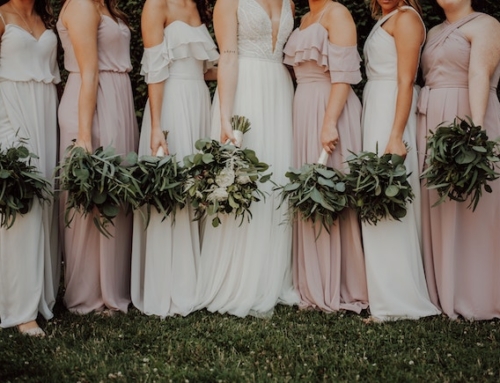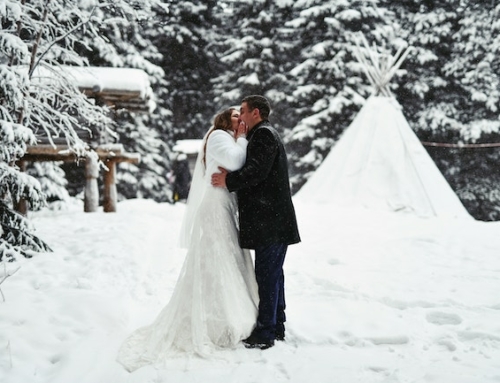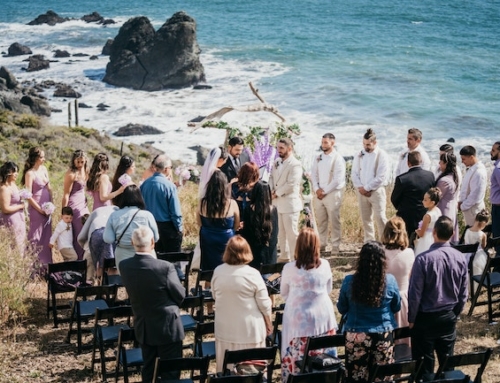The guest list and seating arrangements are two of the most important aspects of wedding planning. It can be a daunting task to decide who to invite and where they will sit during the reception. However, with proper planning and organization, managing guest lists and seating arrangements can be a stress-free process. In this article, we will provide tips and tricks on how to manage your guest list and seating arrangements to ensure a smooth and enjoyable wedding day.

Creating the Guest List
When it comes to planning a wedding, creating the guest list can be a challenging task. One of the first things to consider when creating your guest list is your budget. The number of guests you invite will have a significant impact on your wedding expenses, including catering, venue size, and other wedding-related costs. It’s important to set a realistic budget and stick to it.
Next, you need to consider the capacity of the wedding venue you have chosen. You want to make sure that you have enough space to accommodate all of your guests comfortably. Be sure to ask your venue coordinator for the maximum capacity of the space you are considering, as well as any restrictions that may apply.
Once you have an idea of how many people you can invite within your budget and venue capacity, it’s time to start creating your guest list. There are many factors to consider, such as family members, close friends, and work colleagues. In the next section, we’ll discuss how to prioritise your guest list and create a seating arrangement that works for everyone.

Tips for deciding who to invite to your wedding
- Prioritise close family and friends: Start by making a list of the people who are most important to you and your partner. This could include immediate family members, close friends, and anyone else who has played a significant role in your lives.
- Consider the size of the wedding party: The size of your wedding party can also help you determine how many guests you can invite. If you’re having a small, intimate wedding, you may only be able to invite a few close family members and friends. If you’re having a larger wedding, you’ll have more room to invite additional guests.
- Avoid inviting guests out of guilt: It’s important to only invite people who you genuinely want to share your special day with. Avoid feeling guilty or obligated to invite people just because they invited you to their wedding, or because they are a family member or friend of a family member.
- Set a budget and consider venue capacity: Before finalizing your guest list, it’s important to set a budget and consider the capacity of your wedding venue.
- Make sure you have enough room for your guests and that you can afford to host everyone on your list.
- Consider plus ones carefully: While it’s customary to offer guests a plus one, it’s important to consider this carefully. If you’re having a small wedding, you may want to limit plus ones to only those who are in committed relationships or who are traveling from out of town.
Sending Invitations and Tracking RSVPs

Sending wedding invitations in a timely manner is crucial to ensure that guests have ample time to RSVP and plan accordingly. Typically, invitations should be sent out at least 6-8 weeks before the wedding date.
When creating invitations, it is important to include all necessary details, such as the date, time, and location of the wedding and reception, dress code, and any special instructions or requests (e.g. dietary restrictions, accommodations).
For guests traveling from out of town, it may be helpful to include information on nearby accommodations and transportation options. Couples may also consider creating a wedding website to provide additional information and details for their guests.
Lastly, it’s important to keep track of RSVPs and follow up with guests who have not responded by the deadline. This will ensure that final guest counts are accurate and seating arrangements can be finalized.
Seating Arrangements
Seating arrangements are an important aspect of wedding planning that can impact the overall flow and atmosphere of the reception. It is crucial to ensure that guests are seated comfortably and that the arrangement promotes a relaxed and enjoyable atmosphere for everyone.

Firstly, consider the size and layout of the reception venue. It is important to ensure that tables and chairs are arranged in a way that accommodates all guests comfortably, with enough space for movement and mingling.
Next, think about the relationships between guests and how they should be seated. It is best to seat close family and friends together, as well as people who share similar interests or backgrounds. This can help encourage conversation and create a more enjoyable atmosphere.
When it comes to assigning seats, it is helpful to use place cards or a seating chart. This allows guests to easily find their seats and can help avoid confusion and last-minute changes. It is also a good idea to have a backup plan in case guests switch seats or unexpected guests arrive.
Tips for creating a seating chart:

- Group guests by similar interests or relationships: This can make it easier for guests to strike up conversations and enjoy the company of those they have something in common with.
- Consider guests’ dietary restrictions and needs: Make sure you know in advance about any food allergies or dietary restrictions, and seat those guests near the kitchen or with others who have similar needs.
- Keep families together: If there are young children attending the wedding, make sure they are seated with their parents or other family members. This can help keep them entertained and well-behaved during the reception.
- Seat guests strategically to avoid conflict: If there are guests who have a history of not getting along, make sure they are seated far apart from each other. You can also seat them with others who can act as buffers and keep the peace.
- Mix up the groups: Don’t seat guests only with people they already know. Mix things up by seating them with new people they may not have met before. This can help break the ice and create a more lively atmosphere.
- Consider the layout of the venue: Make sure the seating chart works with the layout of the venue. For example, you may want to seat older guests closer to the entrance or exit, or group tables by the dance floor for those who want to party.
- Use a seating chart tool: There are many online tools and apps that can help you create a seating chart. These tools can make it easy to rearrange guests and try out different configurations until you find the one that works best.
Managing Last-Minute Changes
Last-minute changes to the guest list or seating arrangements can be stressful, but it’s important to handle them as smoothly as possible to ensure a successful wedding day. Here are some tips for managing unexpected changes:

Communicate with vendors
If you need to make changes, be sure to inform all relevant vendors, such as the catering team or venue staff. This will help them adjust their plans accordingly and avoid any confusion on the day of the wedding.
Seek help from the wedding party
Enlist the help of your wedding party to assist with any last-minute changes. They can help with setting up tables and chairs or making sure guests are directed to their seats.
Have a contingency plan
Be prepared for unexpected changes by having a backup plan in place. For example, if a guest unexpectedly cancels, consider inviting a close friend or family member to take their place.
Keep track of changes
Use a seating chart or guest list tracker to keep track of any changes or updates. This will help you stay organized and ensure that everyone is accounted for.
Stay calm
Remember that unexpected changes can happen, and it’s important to stay calm and flexible. Enjoy the moment and focus on the positives, knowing you’ve done everything for a successful event.

Thebigdays is a wedding planning app that offers features to help manage guest lists and seating arrangements. Users can easily create and manage their guest list on the app, assign guest seating and scan QR code check-in. The app also provides a seating chart feature, allowing users to create and adjust their seating arrangements with ease. For last-minute changes, easily update guest list and seating chart on the app.










